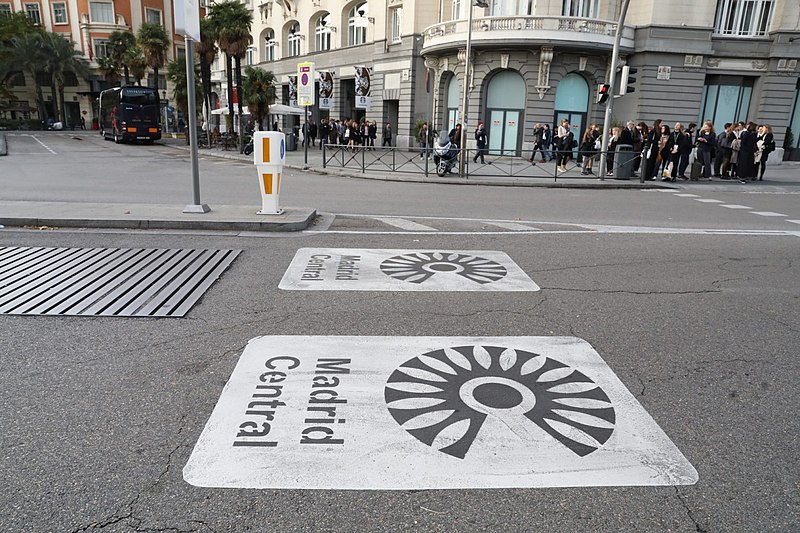Objectives: Air pollutant concentrations in many urban areas are still above the legal and recommended limits that are set to protect the citizens’ health. Madrid is one of the cities where traffic causes high NO2 levels. In this context, Madrid City Council launched the Air Quality and Climate Change Plan for the city of Madrid (Plan A), a local strategy approved by the previous government in 2017. The aim of this study was to conduct a quantitative health impact assessment to evaluate the number of premature deaths that could potentially be prevented by the implementation of Plan A in Madrid in 2020, at both citywide and within-city level. The main purpose was to support decision-making processes in order to maximize the positive health impacts from the implementation of Plan A measures.
Methods: The Regional Statistical Office provided information on population and daily mortality in Madrid. For exposure assessment, we estimated PM2.5, NO2 and O3 concentration levels for Madrid city in 2012 (baseline air- quality scenario) and 2020 (projected air-quality scenario based on the implementation of Plan A), by means of an Eulerian chemical-transport model with a spatial resolution of 1 km × 1 km and 30 vertical levels. We used the concentration-response functions proposed by two relevant WHO projects to calculate the number of at- tributable annual deaths corresponding to all non-accidental causes (ICD-10: A00-R99) among all-ages and the adult population (>30 years old) for each district and for Madrid city overall. This health impact assessment was conducted dependant on health-data availability.
Results: In 2020, the implementation of Plan A would imply a reduction in the Madrid citywide annual mean PM2.5 concentration of 0.6 μg/m3 and 4.0 μg/m3 for NO2. In contrast, an increase of 1 μg/m3 for O3 would be expected. The annual number of all-cause deaths from long-term exposure (95% CI) that could be postponed in the adult population by the expected air-pollutant concentration reduction was 88 (57–117) for PM2.5 and 519 (295–750) for NO2; short-term exposure accounted for 20 (7–32) for PM2.5 and 79 (47–111) for NO2 in the total population. According to the spatial distribution of air pollutants, the highest mortality change estimations were for the city centre – including Madrid Central and mainly within the M-30 ring road –, as compared to peripheral districts. The positive health impacts from the reductions in PM2.5 and NO2 far exceeded the adverse mortality effects expected from the increase in O3.
Conclusions: Effective implementation of Plan A measures in Madrid city would bring about an appreciable decline in traffic-related air-pollutant concentrations and, in turn, would lead to significant health-related benefits.
Read the article here:
https://www.sciencedirect.com/
